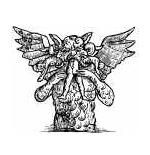
April 2009
The Popes of Avignon: A Century in Exile
By Edwin Mullins
Publisher: Bluebridge
Pages: 256
Price: $24.95
Review Author: Arthur C. Sippo
There are many notorious periods of crisis in the history of the Catholic Church that have had a profound impact on the Catholic faith. One of these was the 73-year span from 1305 to 1378 when the papal court moved from Rome to the French city of Avignon. Many scholars have seen this hiatus as a sign of papal weakness, when the patronage of the King of France essentially rendered the popes his personal chaplains. It has often been called the “Babylonian Captivity of the Papacy” and likened to the 70-year period the Jewish people spent in Babylon after the destruction of Jerusalem in the sixth century B.C. But this comparison is too simplistic and quite far from the truth.
The period of the Avignon papacy came at a time when momentous events were occurring in both ecclesiastical and secular history. During the Avignon sojourn, the popes struggled to maintain their independence from secular monarchs while governing the universal Church. The move to Avignon had been made specifically because the political situation in Rome had degenerated to the point that the popes were no longer safe there. In the 14th century, Avignon was actually on the border area between the Kingdom of France and the only part of the Papal States that was outside of Italy. This guaranteed the popes’ protection from the political chaos in Italy while having their most powerful political ally, the Kingdom of France, near at hand. As always, there were both benefits and disadvantages to the move, but in the long run it preserved papal autonomy until such time as it was safe to return to the Eternal City.
In The Popes of Avignon: A Century in Exile Edwin Mullins gives us a running narrative of the events before, during, and after the period of the Avignon papacy. Mullins, an English author, journalist, and filmmaker educated at the University of Oxford, has a home near Avignon where he resides for part of the year. He shows an obvious love for that area in France and has the kind of intimate knowledge of Avignon that only a local resident could.
Mullins not only tells the story of the Avignon papacy but relates it to other events occurring elsewhere in Europe that would be of interest to modern readers. He writes with a sympathy for historical figures — especially the popes — that is not often seen in the cynical histories that are being written by modern authors and historians. Mullins shows why the move to Avignon was necessary, and never forgets that despite the opulence (or lack thereof) under the various pontificates, the primary function of the papal court was to maintain the enormous bureaucracy necessary to govern the Catholic Church throughout Europe.
There were, of course, scandals and evidence of malfeasance sufficient to make this period intriguing. Soon after the papal court had moved to Avignon, King Philip the Fair of France began his campaign against the military order of the Knights Templar. Philip’s motives were ostensibly to suppress the Templars because of heresy, but the opinion of several centuries of historians has been that he coveted their wealth. Pope Clement V tried to stand up to Philip and defend the order, but the relentless king wore him down and Clement eventually capitulated to the suppression of the order and the execution of many of its senior leaders. After this triumph, Philip declared that he would mount a new Crusade against the Muslims, which in fact never occurred. But he was able — with the Pope’s help — to raise a huge war chest from all of Europe, which represented five times his annual income as King of France. Philip of course kept that money.
Accomplishments in the fields of art, literature, religious thought, and agriculture were notable during this time. For example, the Italian poet Petrarch was a functionary in the ecclesiastical bureaucracy who wrote extensively about his experiences in and around Avignon and the area of Montpelier. The papal court became a source of patronage for various artists and architects who later rose to greatness. The modern premium wine Châteauneuf du Pape comes from the region near Avignon where avid vintner Pope John XXII planted his vineyards. The problem of the Franciscan Spirituals was dealt with definitively during this time. And William of Ockham — probably the most important exponent of Nominalism — came into direct conflict with Pope John XXII over his views. This system would fuel the fires of the Protestant Revolt two centuries later.
Mullins tells his story with grace and ease. The Popes of Avignon is a model for how modern historical narratives should be written for popular consumption. While Mullins does provide a bibliography, there are no footnotes, so this popular history is well and highly recommended to anyone who has an interest in the late-medieval papacy and the European history that surrounded it.
You May Also Enjoy
Since federal bureaucrats don't agree that contraception and abortion are evil, they don't think anybody's religious rights are violated by their mandates.
Christians are called by Finnis, Boyle, and Grisez to avoid any cooperation with our nuclear deterrent, just as we must avoid any cooperation with the abortion industry.
Nouwen’s Honesty... Norman Lear’s Surprise

